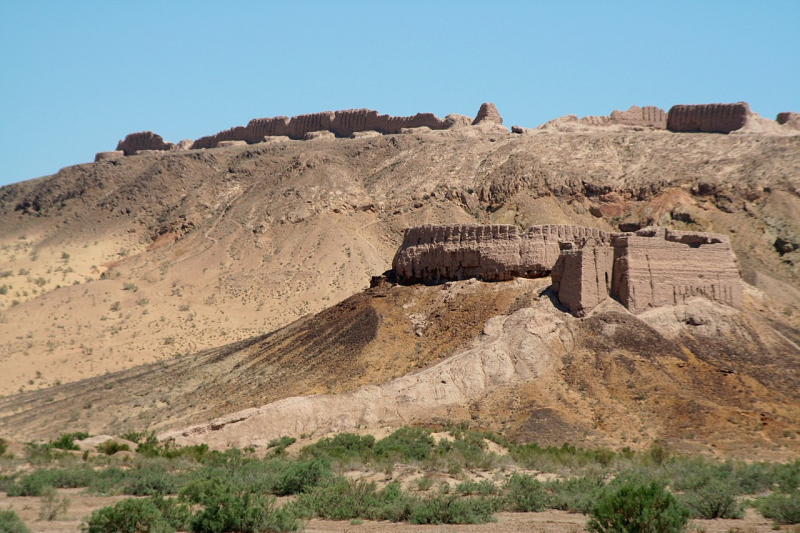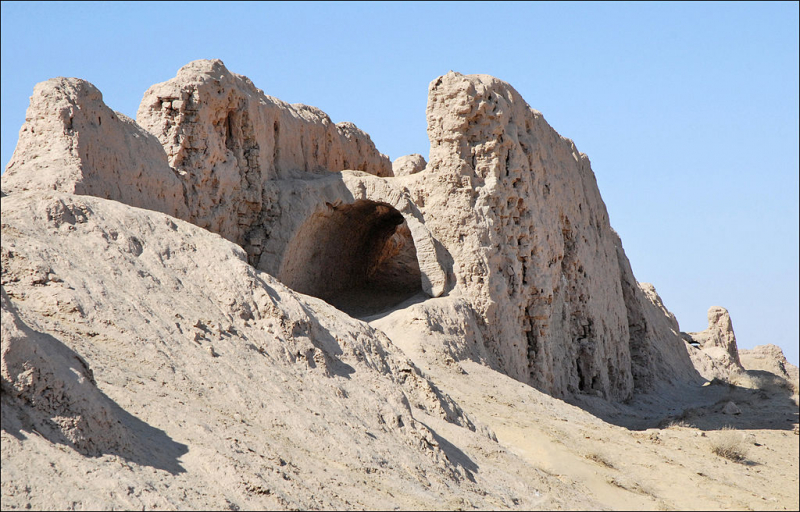ITMO Student
Ayaz-Kala: A Fortress From the Distant Past
The Ayaz-Kala archaeological site encompasses the ruins of three ancient fortresses from the time of the Kushan Empire, located in Uzbekistan’s Kyzylkum Desert. The name of the settlement translates as "fortress in the wind." Built when Kushan culture was at its peak in the third and second centuries BCE, it bolstered the empire’s northern defenses and protected those territories from foreign encroachment.

Ayaz-kala lies 20 km northeast of Toprak-Kala, the ancient Khorezmian capital. It consists of three settlements located on separate hills overlooking the desert at the foot of the Sultan-Uwais ridge.
The settlement of Ayaz-Kala-1, preserved perfectly despite its age, lies on a high hill near the salt lake Ayazkol. Ayaz-Kala-2, which was founded in the Kushan era and completed in the 5th-7th centuries AD, lies nearby, with the third and final site to its southeast. Ayaz-Kala-3 consists of the derelict remnants of a large palace, minarets, and labyrinths and is girdled by robust ramparts.
There is a yurt camp nearby, created so that tourists can get acquainted with the traditions and way of life of Central Asian nomads. It has several yurts with a capacity of 2 to 20 people, and a separate yurt serves as a dining room. The yurt camp has two showers and toilets. This place looks like a camp site, and many travelers stay here for the night.
From the yurt camp, tourists go on tours of all three settlements. Travelers can also ride camels and participate in folklore programs, during which Uzbek, Kazakh, Turkmen and Karakalpak folk songs are performed.
The first excavations of the ancient fortress were carried out in the 1939−1940s under the guidance of the famous archaeologist and ethnographer Sergei Tolstov. At the dig, the archaeologists discovered many ancient artifacts. In the sands between the ruins, they found spearheads and arrows, iron knives and daggers, as well as bronze and gold products.
To the surprise of researchers, there were many newer bricks made for construction and laid along an edge of the Ayaz-Kala settlement. Apparently, the inhabitants of the fortress intended to erect new towers on the south and west sides, but the construction was never completed. For what reasons the inhabitants of the settlement left the long-settled places remains unclear to this day. Most likely, this happened because water left the irrigation channels.
The flat hill of the main settlement of Ayaz-Kala reaches a height of 169 m above sea level and 60 m above the surrounding desert. Many centuries ago, its steep slopes reliably protected the fortress from enemy raids. From the east, an open plateau adjoins the hill, which any enemies would also have needed time to overcome and would surely be discovered in advance by the defenders.

The double walls facing in all directions are built of mud brick. The powerful outer wall rises to a height of 10 m and has a thickness of up to 2.5 m. The inner wall has smaller dimensions and has been preserved much worse than the outer one. To strengthen the fortress walls, semicircular towers were erected at every 10−13 m, with internal rooms for guards and weapons storage. From the walls, there is a great view of the lake Ayazkol, located 7 km to the north. Nowadays, this salty reservoir is almost dry and looks like a large salt marsh.
The entrance to the fortification was located on the south side. Any enemy detachments that got into the settlement would first have to go through an intricate maze. The entrance from the south was made because the strong south wind prevailing in these places carried all the garbage and dust out of the fortress. With such a well-thought-out defense system, the defenders of the Ayaz-Kala settlement could feel safe.
Ayaz-Kala is 200 km away from the Aral Sea. The ruins of the ancient fortress are located on the territory of the Ellikkalinsky district of Karakalpakstan. The international airport and train station are located 80 km away in Urgench. The nearest Uzbek city of Bustan is about 20 km from the fortress. You can get to Bustan by bus.
Most tourists come to the fortress on their own by rented transport. Many travelers get to the Ayaz-Kala settlement by sightseeing buses that run from Urgench and Khiva across the Amu Darya.
Written by Rudolf Ten
